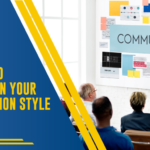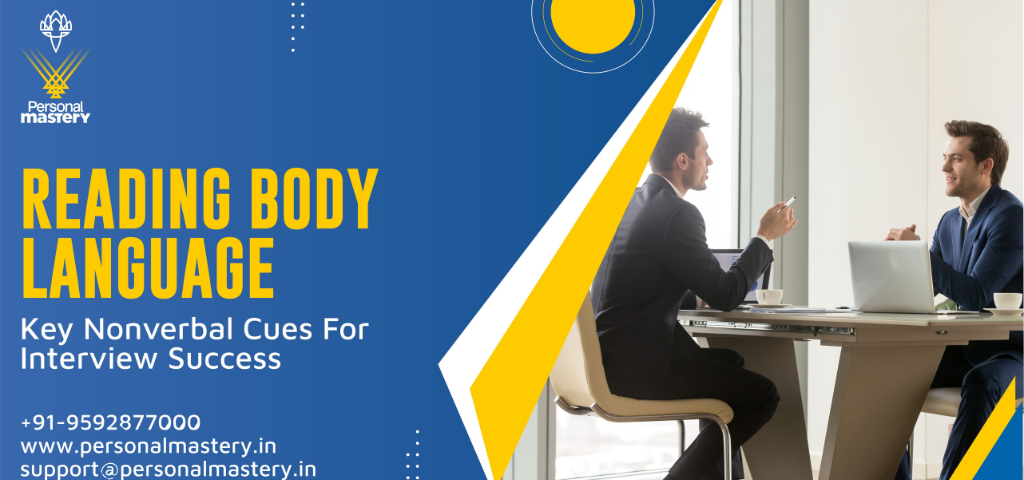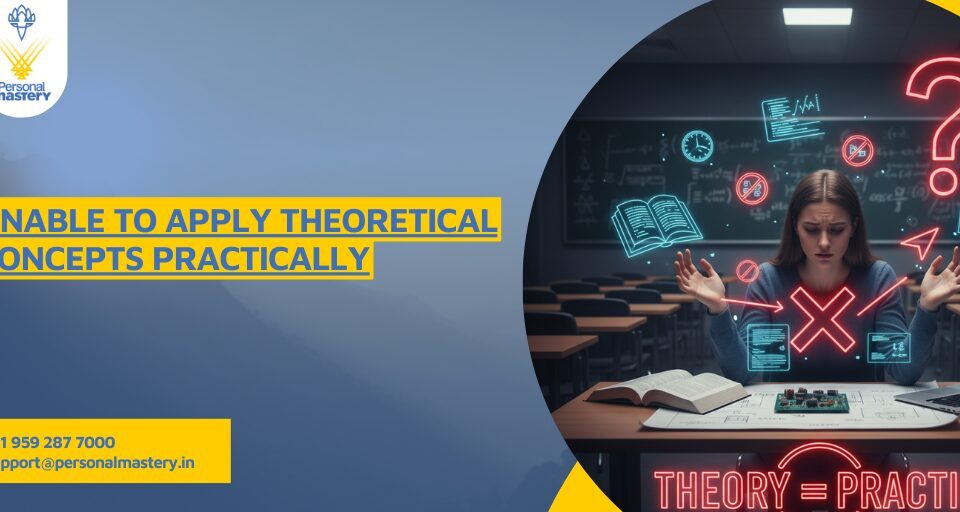
How to Build Confidence in Your Communication Style
January 28, 2025
Difficulty in Building Relationships: How NLP Can Help You Connect Better
February 6, 2025In preparing for an interview, candidates focus more on resumes, rehearsed responses, and technical expertise. However, body language for interviews can be just as important in determining the success of an interview. Nonverbal cues, which include posture, gestures, and facial expressions, can all greatly impact how the interviewer perceives you. In this blog, we will look at decoding body language, mastering it, and writing the success of an interview with a real-life case study of an Indian professional who managed to excel in the interview by effectively using body language cues.
Why Body Language Matters in Interviews
Body language is a very effective way of communicating confidence, professionalism, and competence. Studies indicate that up to 55% of communication is through the nonverbal medium; thus, it’s an essential part of training in professional communication skills that many candidates fail to pay attention to. Nonverbal cues in the interview reflect your mindset and can either boost or contradict the message you are trying to convey in words.
Your prospective employer is assessing not only your qualifications but also if your personality, attitude, and ability to fit into their workplace culture match their expectations. Becoming more mindful of nonverbal communication can help you to make a good impression and demonstrate your readiness for the job.
Key Nonverbal Cues for Interview Success
1. Posture and Sitting Position
Your body reveals a lot about your level of confidence. Always sit straight and high-backed with lowered shoulders. Do not slouch, as this indicates either disinterest or nervousness. Normal posture, on the other hand, indicates alertness and enthusiasm.
Pro Tip: Slightly lean forward while listening-this provides evidence of perceptiveness and interest.
2. Eye Contact
Direct eye contact is a very important aspect of body language for an interview. It reveals that you are confident, attentive, and trustworthy. Avoid staring, of course, as that may spell trouble for you, the one being interviewed.
Pro Tip: Use the “rule of thirds.” Just divide the interviewer’s face into three parts: eyes, nose, and mouth. Let your gaze roam about in those thirds during your conversation to reflect normal eye contact.
3. Hand Gestures
Keeping your hands animated, using gestures, makes your conversation more impactful. Hand gestures should be controlled and purposeful in parallelism with verbal messages to amplify enthusiasm. Avoid incessantly fidgeting, tapping, or waving your hands about for it may only show a certain degree of nervousness.
Pro Tip: If your hands are not in action during the conversation, rest them on your lap. Lay them aside for calm and control.
4. Facial Expressions
The facial expressions you wear reveal your emotion. Spacious smiles show warmth and kindness towards the other person. Be careful not to frown or raise the eyebrows, as this undoubtedly puts some mismatched signal in your messages.
Pro Tip: Stand in front of a mirror and practice uniquely positive and neutral facial expressions. You want to synchronize your nonverbal features to your message.
5. The Handshake
Firmness and a confident handshake remain therefore one of the classic elements espoused in professional skills training. A handshake sets the tone of the rest of the interview and is an impression in itself. A weak or a too-powerful handshake would set the tone in the wrong way.
Pro Tip: Shake hands firmly, yet remain gentle, and continue for only about 2-3 seconds.
6. Proximity and Personal Space
Respect the personal space in the interview. When a candidate gets too close to the interviewer, he or she tends to make the interviewer uncomfortable, while too much distance conveys aloofness.
Pro Tip: Keep your distance at about 2-3 feet, which is more or less accepted in a professional setting.
Case Study:
Background
Ankit Sharma is a 29-year-old marketing professional from Mumbai. He was stuck in his career. His resume boasts an impressive background and the right qualifications, yet he was still not successful in getting his dream job after several interviews. Fed-up and baffled, he sought an interview success coaching certification from Personal Mastery.
The Challenge
The clangor in the feedback received by Ankit from the interviewers focused on one thing: his technicalities were okay but that his nonverbal attitude suggested a lack of confidence and had been inconsiderate. He was often slumped over in his chair, making little or no eye contact, and fidgety during interviews; all these things made him appear unconfident.
The Solution
He took part in the mock interview training program run by Personal Mastery. Ankit was involved in role-plays and given feedback from his coach. The following transformations took place in his body language:
- Posture: Ankit practiced sitting upright with a straight back and relaxed shoulders. His coach emphasized the importance of leaning slightly forward to show interest.
- Eye Contact: Using the “rule of thirds,” Ankit learned to maintain natural eye contact without staring.
- Hand Gestures: He practiced using controlled hand movements to emphasize key points during his responses.
- Facial Expressions: Ankit worked on smiling more often and avoiding nervous facial tics.
- The Handshake: During role-plays, Ankit practiced a firm handshake that conveyed confidence without being overpowering.
The Outcome
Having gained confidence, Ankit went for an interview with a prominent marketing agency in Mumbai. The panel was impressed with Ankit for his calm demeanour, confident bearing, and engaging eye contact. He not only secured the job but also drew the attention of the panel for his excellent communication and professionalism.
He attributes his achievement to the expert coaching skills and personalized feedback during training.
Practical Tips to Improve Your Body Language
- Record Yourself: Practice answering common interview questions while recording yourself on video. Analyze your posture, gestures, and expressions to identify areas for improvement.
- Seek Feedback: Join an interview coaching course online to participate in mock interviews and receive expert guidance.
- Mirror Practice: Stand in front of a mirror and observe your nonverbal cues while practicing your responses.
- Relaxation Techniques: Deep breathing exercises and mindfulness can help calm your nerves and improve your overall body language.
The Role of Interview Coaching in Mastering Nonverbal Communication
As you invest in a certification program of interviewing success coaching for your occupation, it’s like finding a game-changing alchemy for one’s career. These programs offer:
- Mock interview training to simulate real-life scenarios.
- Insights into the psychology of interviewers.
- Advanced techniques to refine both verbal and nonverbal communication skills.
Globally accredited programs like Personal Mastery will allow you lifetime access to resources and ongoing support for either commencing or fine-tuning one’s career.
Conclusion
Understanding the body language is quite important while going for an interview, after all. Carrying an element of attentiveness to posture, eye contact, gesture, and facial expressions can portray confidence, professionalism, and capability. In the case presented by Ankit Sharma, he chose a right guide to transforming his body language nonverbal communication, which led him to new vistas of opportunities.
If you are seeking an interview coach for enhancing your interview skills, think about enrolling in a class for globally accredited online interview coaching. Having valuable tools and practice sessions will surely aid your ability to enforce strong professional presence and therefore allow you to achieve your desired goals.
Contact Us
Phone: +91-9592877000
Email Id: support@personalmastery.in
Address: #748, Sector 9, Panchkula (Chandigarh), Haryana (INDIA) – 134113




